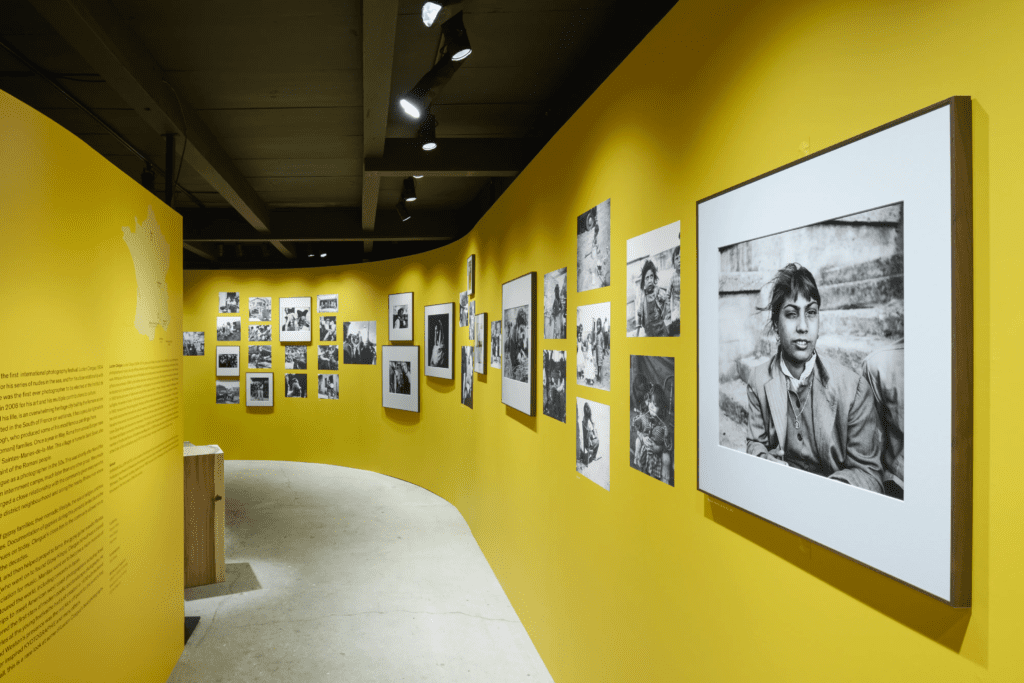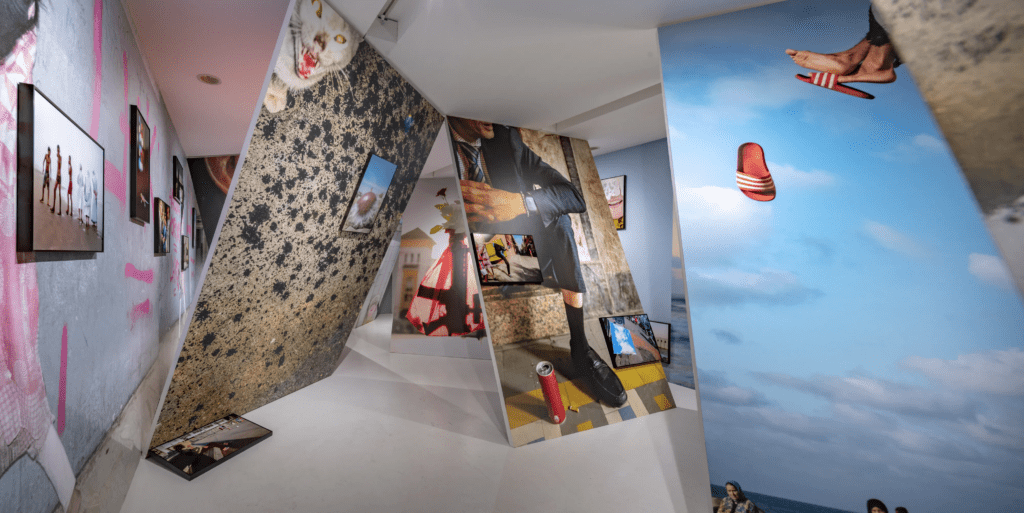International Photography Festival KYOTOGRAPHIE 2024
“SOURCE” will be the theme of the international photography festival “KYOTOGRAPHIE 2024,” taking place in Kyoto from April 13th to May 12th, 2024.
“KYOTOGRAPHIE” was founded in 2011 by photographer Lucille Reyboz and lighting artist Yusuke Nakanishi following the Great East Japan Earthquake. Each year, the festival invites artists from Japan and abroad to explore a single theme through photography, creating exhibitions that reflect modern society and its context.
The theme for this year’s 12th edition of “KYOTOGRAPHIE” is “SOURCE,” focusing on the origin of everything including the creation of life and creative activities. Artists from around the world will explore and present their interpretations of this theme through various works and messages. The festival will feature 13 exhibitions across 12 venues in Kyoto during its duration.

One of the exhibitions featured at “KYOTOGRAPHIE 2024” is “Seed Stories” by French photographer Thierry Hardouin. Co-founder of the photography collective Tendance Floue, Hardouin specializes in capturing portraits of “seeds” that traverse cultures and epochs, revealing the intricate allure concealed within their miniature realms.
The photographs, imbued with a vividness that transcends ordinary perception, will be displayed in the Ninomaru Palace kitchen and the palace of Nijo Castle, both significant cultural landmarks. The exhibition will be curated by scenographer Shinichiro Ogata (SIMPLICITY) and curator Nathalie Chapuis (Atelier EXB).
Before the opening, we interviewed Thierry Hardouin about the exhibition’s history and the concepts behind his artworks.
A story born from an encounter
──This is your first exhibition in Japan. What impressions do you have of Kyoto?

I visited Kyoto once before, eight years ago. I participated in an exhibition called “KOREA ON/OFF” in Busan, South Korea, and since Osaka (Kansai International Airport) was just a few hours away from Busan, I decided to stay in Kyoto for a few days.
I’ve only been to Kyoto in Japan, so I can’t speak much about other cities, but I found Kyoto to be a beautiful, tranquil, and serene city, distinct from larger cities. I particularly enjoyed the Philosopher’s Path, the temples, and the opportunity to connect with nature within the city.
I am thrilled to exhibit this time in Kyoto, especially at the esteemed venue of Nijo Castle, and I am honored to collaborate with scenographer Shinichiro Ogata. I will be staying in Japan throughout the exhibition period and plan to spend a few days visiting Naoshima and Teshima.
──How did you receive the offer for KYOTOGRAPHIE?

I accepted this offer because of my relationship with Xavier Barral, an art director and photo editor who exhibited “Mars: The Unknown Surface” at the 2nd KYOTOGRAPHIE (2014). I met him in 2015. Prior to that, I had held numerous exhibitions of seed portraits in France, and it was through this encounter that I was able to publish “Seed Stories,” a book that had been eagerly anticipated by myself and those around me for a long time.
──So, how did you meet Shinichiro Ogata, who serves as the scenographer?
I also connected with Mr. Ogata through Mr. Barral. We have been discussing this project since November 2023, and we have had three or four meetings via Zoom. However, yesterday (late March of this year) was actually the first time we met in person.
Regarding Mr. Ogata, I became familiar with the Paris space he created, “OGATA Paris,” four years ago. I believe we both share a professional relationship and a sense of closeness.
Hidden diversity and natural beauty
──You keep photographing seeds, what was the reason for that?

Initially, my interest in seeds stemmed from a political perspective, and I began my exploration in 2009. In France, farmers are mandated to use hybrids listed in official catalogs each year and are prohibited from planting seeds saved from their own harvests. In contrast, informal farmers often rely on seeds that are not listed in official catalogs.
There are two categories of seeds: legal and illegal. Curious about how carrot seeds are categorized, I began photographing them because they are incredibly small and not visible to the naked eye when held in the hand. I use an Olympus camera equipped with a microscope to capture these images. For instance, I photograph carrots at approximately 30x magnification, kidney beans at 15x, and vanilla at 60x to reveal their intricate details.
──Have you noticed any changes in yourself as you continue to face seeds?
I discovered the beauty of seeds when I began photographing carrot seeds. Prior to this, my interest in seeds was primarily from a legal perspective. However, as I explored their diverse beauty—varying in color, shape, and type—my focus shifted towards capturing and showcasing this beauty. As a photographer, not a scientist, I believe that highlighting the beauty of nature through photography is a means of advocating for its protection.
Universal and essential themes that we embrace while traveling

──What do you think of this year’s KYOROGRAPHIE theme, “SOURCE”?
“SOURCE” is my conceptual framework. Seeds have existed since before humans, and throughout history, people have relied on them for essential nutrients like vitamins and protein, dating back to the Stone Age. They truly represent our origins.
Seeds are universal and essential, transcending borders. However, the distribution of crops varies from region to region: rice in Asia, wheat in the Mediterranean, corn in America, each representing the unique culture of its region. In French, seeds are also referred to as “Origine,” signifying they are the source and the very roots of ourselves.
I felt that this moment had been a long time coming, as it aligns perfectly with the theme of my work, “SEED.”
──What kind of exhibition will it actually be like?
This time, for the first time, we will be exhibiting works using not only French seeds but also Kyoto seeds. In January of this year, seeds collected from a farm in Kyoto were sent to France, where we selected and photographed seeds such as radish, shiso, rice, indigo, and others.

The exhibition at Nijo Castle will be directed by Mr. Ogata. Without giving away too much, I can reveal a glimpse: the exhibit starts with a tiny, real seed, and as visitors progress through the room, they will encounter photographs of seeds magnified dozens of times. Drawing from my photography experience, the structure is crafted to evoke the same awe and wonder that seeds inspire in me. I’m eager to share this captivating journey of seeds with everyone.
Thierry Hardouin ◎ Photographer born in 1961 in Saint-Ouin, France. In 1991, he co-founded the photography collective Tendance Floue. His work centers on exploring the relationship between humans and their environment. In 2022, his book “Seed Stories” (Atelier EXB) was published.
KYOTGRAPHIE Kyoto International Photo Festival
Thierry Hardouin “Seed Stories” Presented by Van Cleef & Arpels in collaboration with Atelier EXB
Venue: Nijo Castle, Ninomaru Palace Kitchen/Goshojo Address: 541 Nijo Castle-cho, Nakagyo-ku, Kyoto City Date: April 13th – May 12th, 2024 Opening Hours: 9:30 – 17:00 (last entry 16:30) *Entry to Nijo Castle is until 16:00
Admission Fees:
- Adults: 1200 yen
- Students: 1000 yen *Separate entrance fee to Nijo Castle (800 yen) is required
Must Reacd: CAN INTERNET CULTURE BECOME MODERN ART?
